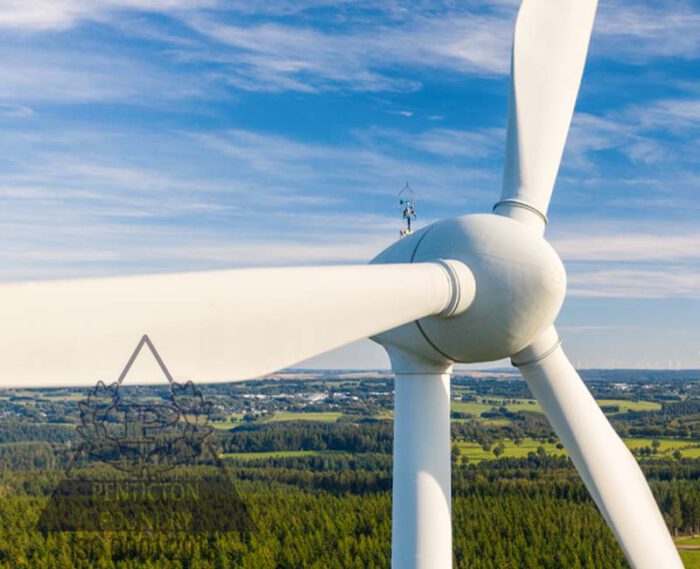Castings for Wind Power
on November 5, 2021Wind power, or wind energy, is a sustainable, renewable energy source that provides mechanical power through wind turbines to generate electrical power. Wind power castings are an integral part of wind turbines, which are expected to run continuously for upward of 20 years.

EN-GJS-400-18U-LT (DIN 1693 Grade GGG 40.3)
The castings must be light weight, while not succumbing to fatigue failure over their lifespan. A material of choice for these castings is EN-GJS-400-18U-LT (also known as DIN 1693 Grade GGG 40.3). This ferritic ductile iron is engineered with high ductility, and an ability to function at low temperatures. This alloy is engineered to have good low-temperature toughness and high notch-ductility. Of all the ductile iron grades available, this one would exhibit the highest upper shelf energy and the lowest ductile-to-brittle transition temperature.
Read: “Impact Values of Ductile Iron” to learn more.
Designing Wind Castings
When designing a wind turbine casting, it is important to work closely with the foundry. Solidification and flow analysis will help to ensure that the casting solidifies with the best internal and surface qualities achievable. Subsequent testing of the casting via ultrasound and X-ray will confirm its quality, and the quality of the foundry process. Testing of a coupon for mechanical properties will ensure that the engineering properties of the metal meet the minimum requirements.
Read: For more information on designing ductile iron castings read, “Top 5 Design Mistakes of Ductile Iron Castings.”
Production of GGG 40.3
Production of GGG 40.3 is very demanding.
Here are some troubleshooting tips:
- High quality raw materials are the first step in achieving the high standards of this material
- A properly made mould, with good sand control, is critical
- Providing the best path for the metal to flow, and designing correct solidification paths, will help ensure surface and internal soundness
- Before pouring, the metal must meet strict compositional limits, which will change based on casting section thickness
- Processing the liquid metal properly is the next key step in ensuring that your casting performs to expectations
- Treatment and inoculation will define the final properties, including the quality of the nodularity and the number of nodules produced
After solidification and shakeout, mechanical properties can be altered slightly via heat treatment. Nodularity, internal soundness and surface quality, however, cannot be changed. That is why the foundry process is so important to the production of high quality wind turbine castings.
Typical Parts
- Hub
- Shaft
- Gearbox
Resource: For more information on ductile iron, check out our ductile iron webpage, which also contains links to all of our data sheets.

